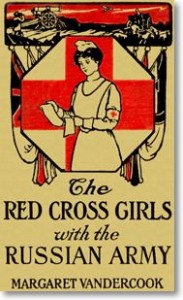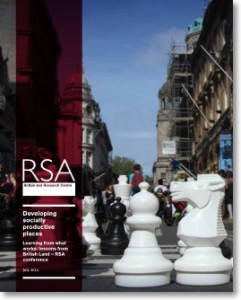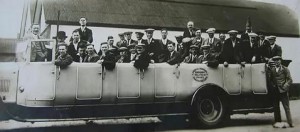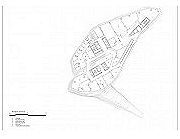The weekend of June 28th 2014 marked the centenary of the death of Archduke Ferdinand in Sarajevo, at the hands of Gavrilo Princip. Arguably sparking the events that put in train the First World War.
This reflection revealed a surprising and diverse range of resources about the Great Conflict. Many, perhaps, at odds with the perceived understanding of the war and its consequences. Remarkable in as much that so much is yet to be discovered, even after a century has passed…
Image: A single German war grave near Ypres, commemorating over 40,000 of their lost combatants…
The weekend in East Anglia in 2014 was fresh, warm and sunny, as it was across England on that weekend in 1914. (You can see a detailed weather forecast from The Meteorological Office for June 1914 here  …Ed.) It is unlikely that Princip, in his passion to undermine Austrian dominance of his culture, was thinking of the words of Thomas Hoccleve, see below.
…Ed.) It is unlikely that Princip, in his passion to undermine Austrian dominance of his culture, was thinking of the words of Thomas Hoccleve, see below.
His ambitions were arguably localised, national, but the outcome of his act was trans-continental. With the destruction to come, the terrible devastation of war, linked to and having an unfortunate long echo back to the previous tumultuous tragedies in France during the 15th Century. The anguish is contemporary still.
Allas! what peple hathe your werre slayne!
What cornes wastede, and doune trode and shent!
How many a wyfe and maide hathe be forlayne,
Castrels doune bete, and tymbered houses brent
And drawen doune, and alle tortore and rent!
The harme ne may not rekened be ne tolde;
This werre wexethe all to hore and olde…
Thomas Hoccleve, Poet & Clerk, London
‘An appeal for Peace in France’ (1412)
Princip, part of a team of six Bosnian-Serb radicals dedicated to their plan, was standing outside a cafe in Franz Josef Street, reflecting on an earlier failed assassination attempt upon the Austrian Archduke by a co-conspirator that day. When, seeing the royal vehicle, engine stalled after taking a wrong turn, he leapt forward with his revolver, and from a distance of five feet, changed history.
This story of ‘cataclysm by happenstance’ continues to provoke debate and divide about how the next few months saw progress into war, but also about the wider legacy of Princip’s actions, even after a hundred years has passed. The narratives still differ, both historic and contemporary, often in surprising ways.
Modern Sarajevo remains a divided city, politically and culturally, to this day. With Princip seen as hero or devil depending upon the view of historical events taken from the city centre. To mark the Sarajevan centenary Andrew MacDowall, in The Guardian newspaper, has written an interesting and insightful article on how stands the political front-line concerning Princip.
You can discover MacDowell’s article on-line here…
In Eastern Sarajevo, from the view point of the Serb Republic, Princip is a national hero,. His actions freeing the city from Austrian dominance. However, for the Bosnian Muslim population Princip’s actions bought about an end to a golden era of Austrian administration. The Muslim population look to the grand edifices of civil society, schools and railways of the Austrian Empire as evidence of their argument.
Even after a hundred years, residents of a strife torn city cannot agree on a single, conciliatory view of their history. This set us thinking about that sunny day in 1914. What were, or what did, contemporaries to Princip think about the coming events and their out turn?
We turned to the Project Gutenberg on-line library. Looking through the project’s World War 1 bookshelf we discovered, amongst the usual, deeply moving and contemporary military narratives, a surprising and very different view of events and understanding of the ‘culture’ of war, particularly of conflict in other places.
This writer did not know of a Mills and Boon, Kiplingesque literary oeuvre developed around events of the war. Deeply at odds with the first person narrative of other, military writers, but perhaps born of a then contemporary optimism for Empire, incomplete knowledge and the heady ‘home by Christmas’ approach.
The Gutenberg archive also makes available to the general reader a selection of European political writing on the Great War. We found the account of pre-war diplomacy and events from Viscount Haldane both disturbing and revealing about political attitudes and actions towards European conflict. See more here…
 You can discover the Gutenberg Project library World War bookshelf here…
You can discover the Gutenberg Project library World War bookshelf here…
 Margaret Vandercook in her The Red Cross Girls with the Russian Army, (John Winston Co., Philadelphia, 1916) writes about war and combat as a sort of Mills & Boon romance adventure. Dashing young men in foreign places, capturing the swooning hearts of kindly young women. Published in 1916, it arguably represents a canon of juvenile fiction, that was blind to, or unknowing of the true horror of warfare at any front-line.
Margaret Vandercook in her The Red Cross Girls with the Russian Army, (John Winston Co., Philadelphia, 1916) writes about war and combat as a sort of Mills & Boon romance adventure. Dashing young men in foreign places, capturing the swooning hearts of kindly young women. Published in 1916, it arguably represents a canon of juvenile fiction, that was blind to, or unknowing of the true horror of warfare at any front-line.
There is a sort of breathless, adventure story pace to the book, at odds with the newsreel and written narratives we have come to know about the Great War and other conflicts in the 20th and 21st centuries.
There is in this bookshelf collection a fascinating insight into the power of Empire and the loyalty created in military service.
In Talbot Munday’s Hira Singh – When India Came to Fight in Flanders lies the fictionalised story of a group of Sikh soldiers captured by the German army in Flanders and transported back to ‘Constantinople’, who then escaped and marched overland to Kabul in Afghanistan to rejoin the British Army in their fight in Europe again.
One hundred Indian troops of the British Army have arrived at Kabul, Afghanistan, after a four months’ march from Constantinople. The men were captured in Flanders by the Germans and were sent to Turkey in the hope that…they might join the Turks. But they remained loyal to Great Britain and finally escaped, heading for Afghanistan. They now intend to join their regimental depot in India, so it is reported.
New York Times, July, 1915 (Talbot Munday)
Although fiction, with some of the language jarring by modern cultural norms, and being written by a European, the story none the less provides insights into the nature of leadership, how men who were accomplished warriors from another culture, might have seen the conflict in Europe with empathetic eyes.
The archive does not contain any reflection from Indian sources, but when looking at the contribution of the Indian Army and Marine service to the conflict, there is little doubt that support there was.
How profound, prompted a look at the detail of the contribution of the Indian Army in the Great War? Details of the 1 million Indian troops who served in France, Mesopotamia and other battle zones can be found on the Commonwealth War Graves Commission web pages.  See more here…
See more here…
Closer to home are a range of projects and community activities to remember the Great War in detail. One such is the work done by Fellows in Chelmsford, as part of a Heritage Lottery funded project – Chelmsford Remembers, and which will be launched as part of the Essex Remembers event, which involves both Essex County Council and Chelmsford City Council, to held at Hylands House on the weekend of 13th/14th September.
We look forward to supporting Fellows in the project by delivering a ‘web special feature’ about this exciting social history journey of discovery. (You can find the Chelmsford War Memorial web site here – this is a wonderful resource, with images and detailed biographies of the 359 men commemorated on the Great War Memorial in Chelmsford, Ed.)
Even after one hundred years, the local and social is as telling and moving as ever. Princip would probably still recognise the physical landscape old Sarajevo, if not the political one, whilst great new discoveries and insights lay waiting in the family archives of Chelmsford we suspect.
Newer on-line resources for The Great War
 The Google Cultural Institute – The First World War
The Google Cultural Institute – The First World War
A new web resource, dedicated to the art, politics and history of the great conflict. Referencing major UK museum collections, but also providing insights into history from a surprising variety of sources.
 Europeana Exhibitions – Untold Stories of the First World War
Europeana Exhibitions – Untold Stories of the First World War
A new resource offering insights into how ‘… it was the ordinary men and women who were affected the most. This exhibition gives those personal accounts from across Europe for the first time, based on stories and items contributed by the public’.

![]() You can see the original film on YouTube here…
You can see the original film on YouTube here…![]() You can find a thoughtful reflection on the novel by Elena Ferranti here. It is written by Rohan Maitzen.
You can find a thoughtful reflection on the novel by Elena Ferranti here. It is written by Rohan Maitzen.![]() The original research was featured in the journal Nature: see Schich, M. et al. Science 345, 558–562 (2014).
The original research was featured in the journal Nature: see Schich, M. et al. Science 345, 558–562 (2014).![]() Freebase data is available for use under open license. Explore the contents here, you can see how to use the data more explicitly here.
Freebase data is available for use under open license. Explore the contents here, you can see how to use the data more explicitly here.







